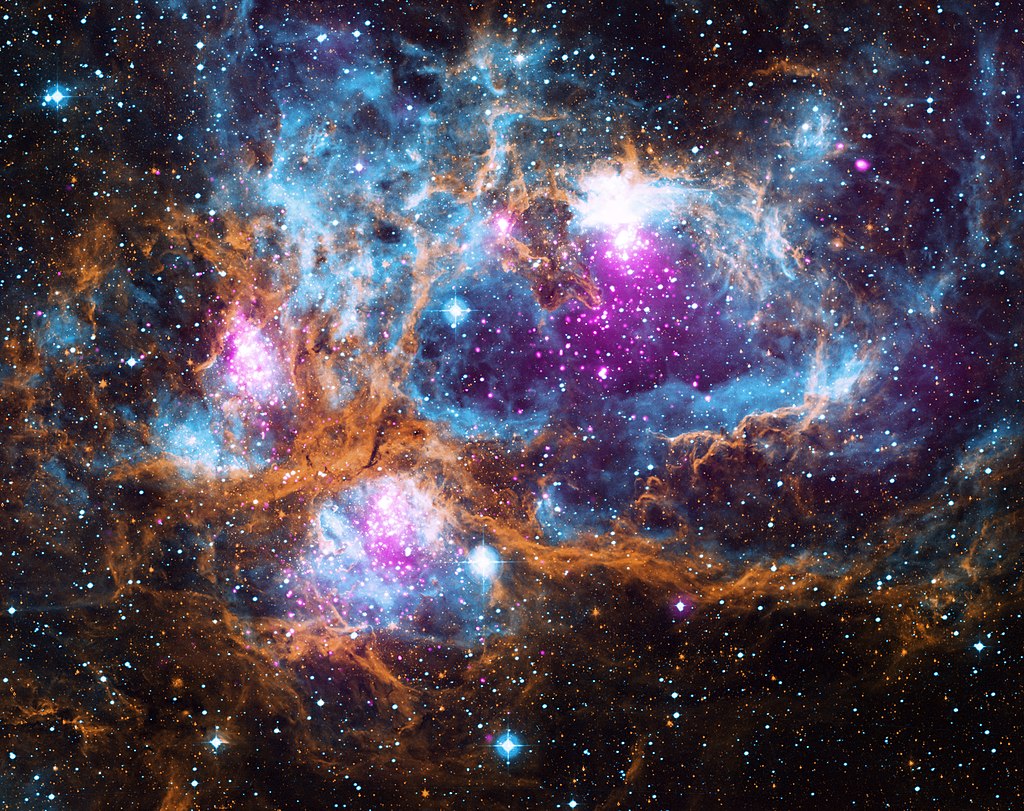Over 5,000 exoplanets have been discovered around distant star systems. Protoplanetary disks have been discovered too and it’s these, out of which all planetary systems form. Such disks have recently been found in two binary star systems. The stellar components in one have a separation of 14 astronomical units (the average distance between the Earth and Sun is one astronomical unit) and the other system has a separation of 22 astronomical units. Studying systems like these allow us to see how the stars of a binary system interact and how they can distort protoplanetary disks.
Continue reading “Astronomers See Planets Forming Around Binary Stars”Baby Stars Discharge “Sneezes” of Gas and Dust
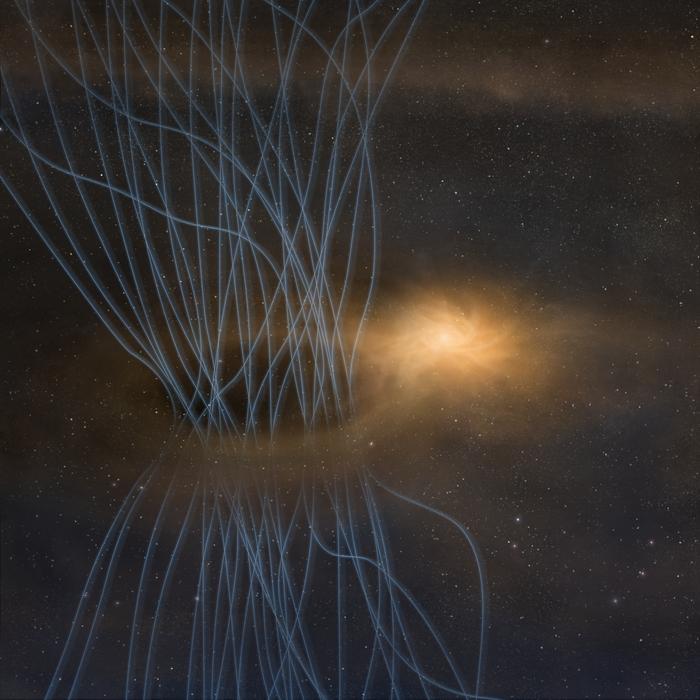
I’m really not sure what to call it but a ‘dusty sneeze’ is probably as good as anything. We have known for some years that stars surround themselves with a disk of gas and dust known as the protostellar disk. The star interacts with it, occasionally discharging gas and dust regularly. Studying the magnetic fields revealed that they are weaker than expected. A new proposal suggests that the discharge mechanism ‘sneezes’ some of the magnetic flux out into space. Using ALMA, the team are hoping to understand the discharges and how they influence stellar formation.
Continue reading “Baby Stars Discharge “Sneezes” of Gas and Dust”The Youngest Planetary Disks Ever Seen

How long does planet formation take? Maybe not as long as we thought, according to new research. Observations with the Atacama Large Millimetre/submillimetre Array (ALMA) show that planet formation around young stars may begin much earlier than scientists thought.
Continue reading “The Youngest Planetary Disks Ever Seen”JWST Reveals Protoplanetary Disks in a Nearby Star Cluster
The Orion Nebula is a favourite among stargazers, certainly one of mine. It’s a giant stellar nebula out of which, hot young stars are forming. Telescopically to the eye it appears as a grey/green haze of wonderment but cameras reveal the true glory of these star forming regions. The Sun was once part of such an object and astronomers have been probing their secrets for decades. Now, a new paper presents the results from a detailed study from the James Webb Space Telescope (JWST) that has been exploring planet forming disks around stars in the Lobster Nebula.
Continue reading “JWST Reveals Protoplanetary Disks in a Nearby Star Cluster”Simulated View of a Newly Forming Planetary System with Rings and Gaps
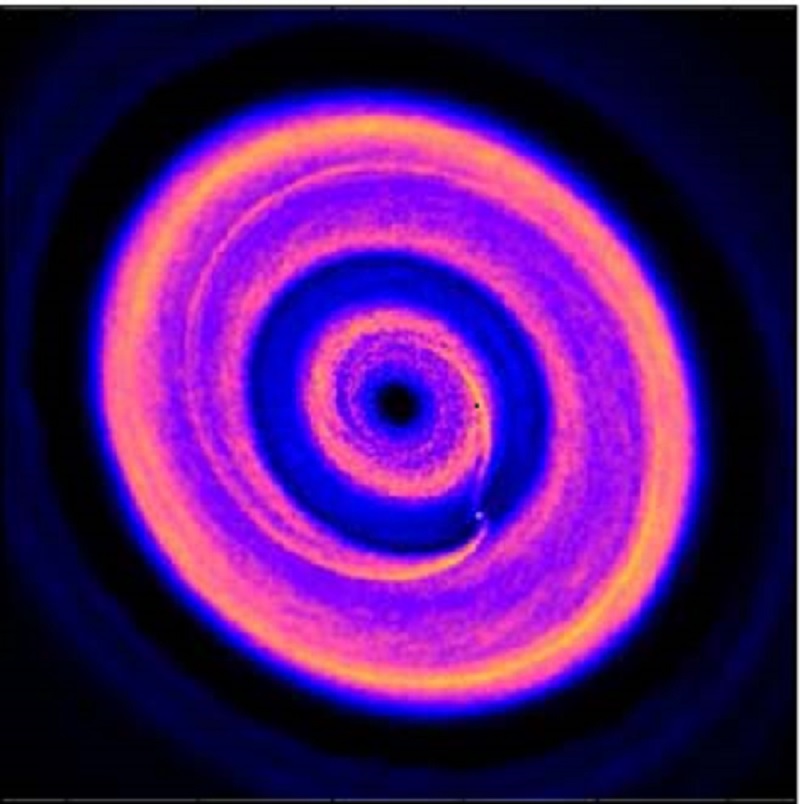
When searching for extra-solar planets, astronomers most often rely on a number of indirect techniques. Of these, the Transit Method (aka. Transit Photometry) and the Radial Velocity Method (aka. Doppler Spectroscopy) are the two most effective and reliable (especially when used in combination). Unfortunately, direct imaging is rare since it is very difficult to spot a faint exoplanet amidst the glare of its host star.
However, improvements in radio interferometers and near-infrared imaging has allowed astronomers to image protoplanetary discs and infer the orbits of exoplanets. Using this method, an international team of astronomers recently captured images of a newly-forming planetary system. By studying the gaps and ring-like structures of this system, the team was able to hypothesize the possible size of an exoplanet.
The study, titled “Rings and gaps in the disc around Elias 24 revealed by ALMA “, recently appeared in the Monthly Notices of the Royal Astronomical Society. The team was led by Giovanni Dipierro, an astrophysicist from the
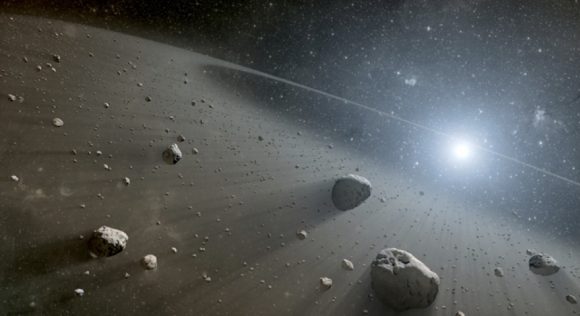
In the past, rings of dust have been identified in many protoplanetary systems, and their origins and relation to planetary formation are the subject of much debate. On the one hand, they might be the result of dust piling up in certain regions, of gravitational instabilities, or even variations in the optical properties of the dust. Alternately, they could be the result of planets that have already developed, which cause the dust to dissipate as they pass through it.
As Dipierro and his colleagues explained in their study:
“The alternative scenario invokes discs that are dynamically active, in which planets have already formed or are in the act of formation. An embedded planet will excite density waves in the surrounding disc, that then deposit their angular momentum as they are dissipated. If the planet is massive enough, the exchange of angular momentum between the waves created by the planet and the disc results in the formation of a single or multiple gaps, whose morphological features are closely linked to the local disc conditions and the planet properties.”
For the sake of their study, the team used data from the Atacama Large Millimeter/sub-millimeter Array (ALMA) Cycle 2 observations – which began back in June of 2014. In so doing, they were able to image the dust around Elias 24 with a resolution of about 28 AU (i.e. 28 times the distance between the Earth and the Sun). What they found was evidence of gaps and rings that could be an indication of an orbiting planet.
From this, they constructed a model of the system that took into account the mass and location of this potential planet and how the distribution and density of dust would cause it to evolve. As they indicate in their study, their model reproduces the observations of the dust ring quite well, and predicted the presence of a Jupiter-like gas giant within forty-four thousand years:
“We find that the dust emission across the disc is consistent with the presence of an embedded planet with a mass of ?0.7?MJ at an orbital radius of ? 60?au… The surface brightness map of our disc model provides a reasonable match to the gap- and ring-like structures observed in Elias 24, with an average discrepancy of ?5?per?cent of the observed fluxes around the gap region.”
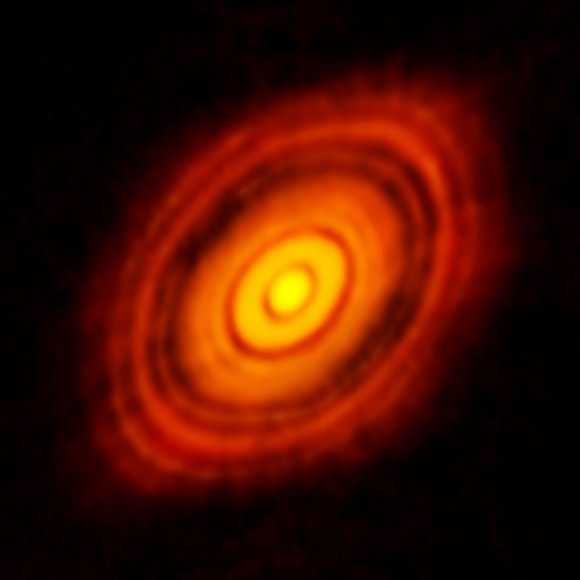
These results reinforce the conclusion that the gaps and rings that have been observed in a wide variety of young circumstellar discs indicate the presence of orbiting planets. As the team indicated, this is consistent with other observations of protoplanetary discs, and could help shed light on the process of planetary formation.
“The picture that is emerging from the recent high resolution and high sensitivity observations of protoplanetary discs is that gap and ring-like features are prevalent in a large range of discs with different masses and ages,” they conclude. “New high resolution and high fidelity ALMA images of dust thermal and CO line emission and high quality scattering data will be helpful to find further evidences of the mechanisms behind their formation.”
One of the toughest challenges when it comes to studying the formation and evolution of planets is the fact that astronomers have been traditionally unable to see the processes in action. But thanks to improvements in instruments and the ability to study extra-solar star systems, astronomers have been able to see system’s at different points in the formation process.
This in turn is helping us refine our theories of how the Solar System came to be, and may one day allow us to predict exactly what kinds of systems can form in young star systems.
A Star With A Disk Of Water Ice? Meet HD 100546

It might seem incongruous to find water ice in the disk of gas and dust surrounding a star. Fire and ice just don’t mix. We would never find ice near our Sun.
But our Sun is old. About 5 billion years old, with about 5 billion more to go. Some younger stars, of a type called Herbig Ae/Be stars (after American astronomer George Herbig,) are so young that they are surrounded by a circumstellar disk of gas and dust which hasn’t been used up by the formation of planets yet. For these types of stars, the presence of water ice is not necessarily unexpected.
Water ice plays an important role in a young solar system. Astronomers think that water ice helps large, gaseous, planets to form. The presence of ice makes the outer section of a planetary disk more dense. This increased density allows the cores of gas planets to coalesce and form.
Young solar systems have what is called a snowline. It is the boundary between terrestrial and gaseous planets. Beyond this snowline, ice in the protoplanetary disk encourages gas planets to form. Inside this snowline, the lack of water ice contributes to the formation of terrestrial planets. You can see this in our own Solar System, where the snowline must have been between Mars and Jupiter.
A team of astronomers using the Gemini telescope observed the presence of water ice in the protoplanetary disk surrounding the star HD 100546, a Herbig Ae/Be star about 320 light years from us. At only 10 million years old, this star is rather young, and it is a well-studied star. The Hubble has found complex, spiral patterns in the disk, and so far these patterns are unexplained.
HD 100546 is also notable because in 2013, research showed the probable ongoing formation of a planet in its disk. This presented a rare opportunity to study the early stages of planet formation. Finding ice in the disk, and discovering how deep it exists in the disk, is a key piece of information in understanding planet formation in young solar systems.
Finding this ice took some clever astro-sleuthing. The Gemini telescope was used, with its Near-Infrared Coronagraphic Imager (NICI), a tool used to study gas giants. The team installed H2O ice filters to help zero in on the presence of water ice. The protoplanetary disk around young stars, as in the case of HD 100546, is a mixed up combination of dusts and gases, and isolating types of materials in the disk is not easy.
Water ice has been found in disks around other Herbig Ae/Be stars, but the depth of distribution of that ice has not been easy to understand. This paper shows that the ice is present in the disk, but only shallowly, with UV photo desorption processes responsible for destroying water ice grains closer to the star.
It may seem trite so say that more study is needed, as the authors of the study say. But really, in science, isn’t more study always needed? Will we ever reach the end of understanding? Certainly not. And certainly not when it comes to the formation of planets, which is a pretty important thing to understand.
The Moon Is Just 95 Million Years Younger Than The Solar System: Study

Stuff from Earth’s interior, combined with simulations, have one research team pinning down the Moon’s age to only 95 million years after the Solar System formed (which would make our closest satellite about 4.4 billion years old.)
The simulation involved replicating how the Earth and the other terrestrial planets (Mercury, Venus and Mars) grew from a protoplanetary disc surrounding the young Sun. After 259 simulations, the researchers uncovered a link between when a Mars-sized object smacked Earth (eventually forming the Moon) and how much material Earth gained after the crash.
“This correlation just jumped out of the simulations and held in each set of old simulations we looked at,” stated Seth Jacobson of the Observatory of Cote d’Azur in France, who led the study.
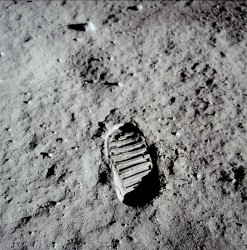
Researchers are calling this a “geologic clock” that dates the Moon independently from the samples Apollo astronauts collected from the moon in the 1960s and 1970s, which were dated using radioactive decay of atomic nuclei. The Earth’s mass was estimated using previously published material examining how plentiful “siderophile” (iron-associated) elements were in Earth’s mantle.
The exact date, for the curious, puts the Moon’s formation at 95 ±32 million years after the solar system began. The measurement agrees with some, but not all, radioactive dating methods.
The researchers argue that this new understanding will help scientists figure out which of the radioactive dating methods are the most useful to figure out the Moon’s age, but it will be interesting to see what other teams think of that conclusion.
You can read the full study in Nature.
Source: Southwest Research Institute
Should This Alien World Even Exist? This Young Disk Could Challenge Planet-Formation Theories
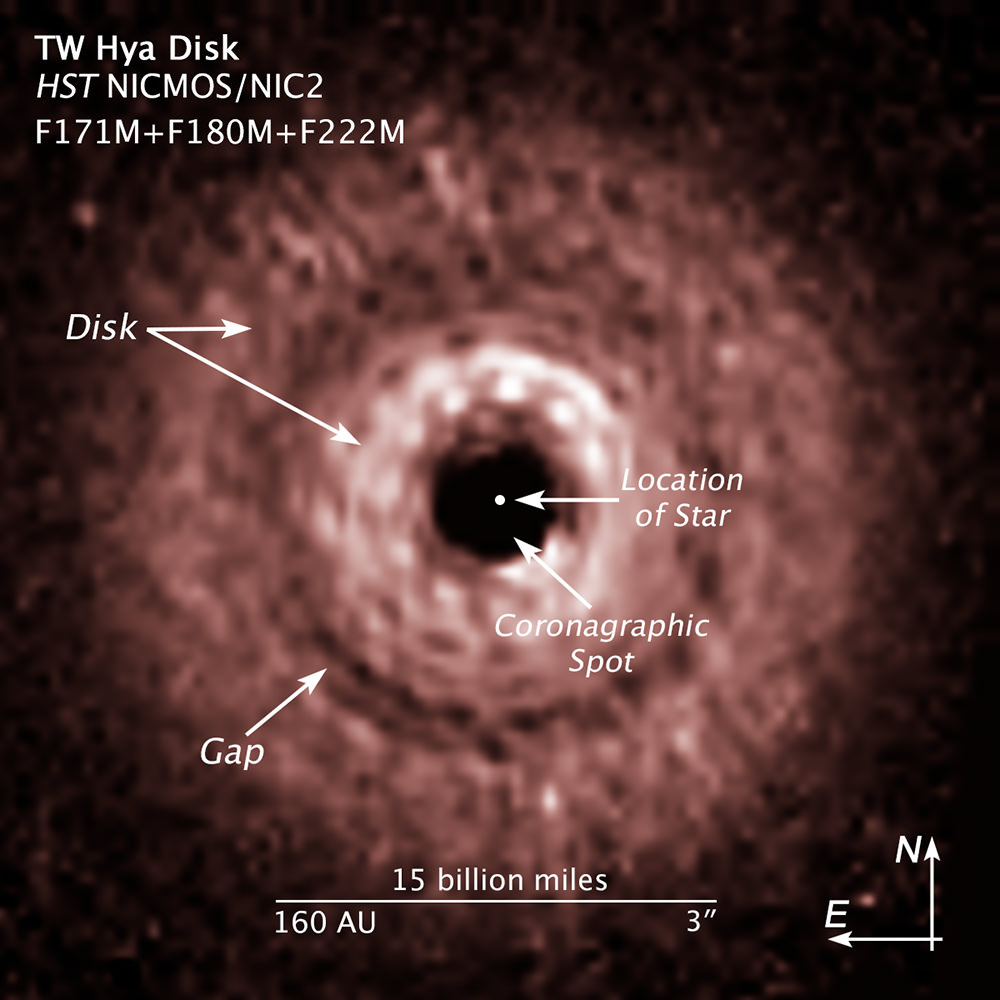
Take a close look at the blurry image above. See that gap in the cloud? That could be a planet being born some 176 light-years away from Earth. It’s a small planet, only 6 to 28 times Earth’s mass.
That’s not even the best part.
This alien world, if we can confirm it, shouldn’t be there according to conventional planet-forming theory.
The gap in the image above — taken by the Hubble Space Telescope — probably arose when a planet under construction swept through the dust and debris in its orbit, astronomers said.
That’s not much of a surprise (at first blush) given what we think we know about planet formation. You start with a cloud of debris and gas swirling around a star, then gradually the bits and pieces start colliding, sticking together and growing bigger into small rocks, bigger ones and eventually, planets or gas giant planet cores.
But there’s something puzzling astronomers this time around: this planet is a heck of a long way from its star, TW Hydrae, about twice Pluto’s distance from the sun. Given that alien systems’ age, that world shouldn’t have formed so quickly.
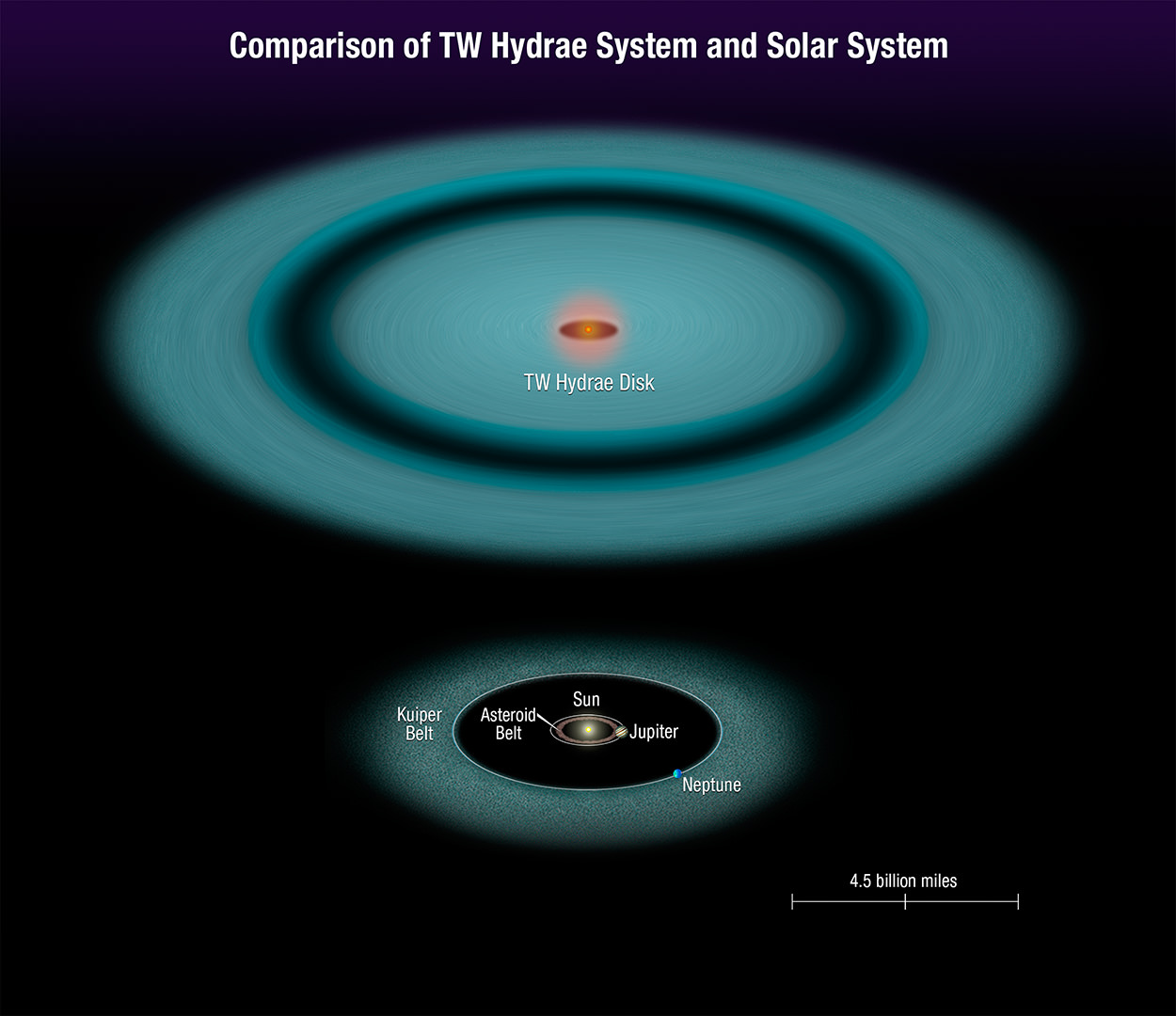
Astronomers believe that Jupiter took about 10 million years to form at its distance away from the sun. This planet near TW Hydrae should take 200 times longer to form because the alien world is moving slower, and has less debris to pick up.
But something must be off, because TW Hydrae‘s system is believed to be only 8 million years old.
“There has not been enough time for a planet to grow through the slow accumulation of smaller debris. Complicating the story further is that TW Hydrae is only 55 percent as massive as our sun,” NASA stated, adding it’s the first time we’ve seen a gap so far away from a low-mass star.
The lead researcher put it even more bluntly: “Typically, you need pebbles before you can have a planet. So, if there is a planet and there is no dust larger than a grain of sand farther out, that would be a huge challenge to traditional planet formation models,” stated John Debes, an astronomer at the Space Telescope Science Institute in Baltimore.

At this point, you would suppose the astronomers are seriously investigating other theories. One alternative brought up in the press release: perhaps part of the disc collapsed due to gravitational instability. If that is the case, a planet could come to be in only a few thousand years, instead of several million.
“If we can actually confirm that there’s a planet there, we can connect its characteristics to measurements of the gap properties,” Debes stated. “That might add to planet formation theories as to how you can actually form a planet very far out.”
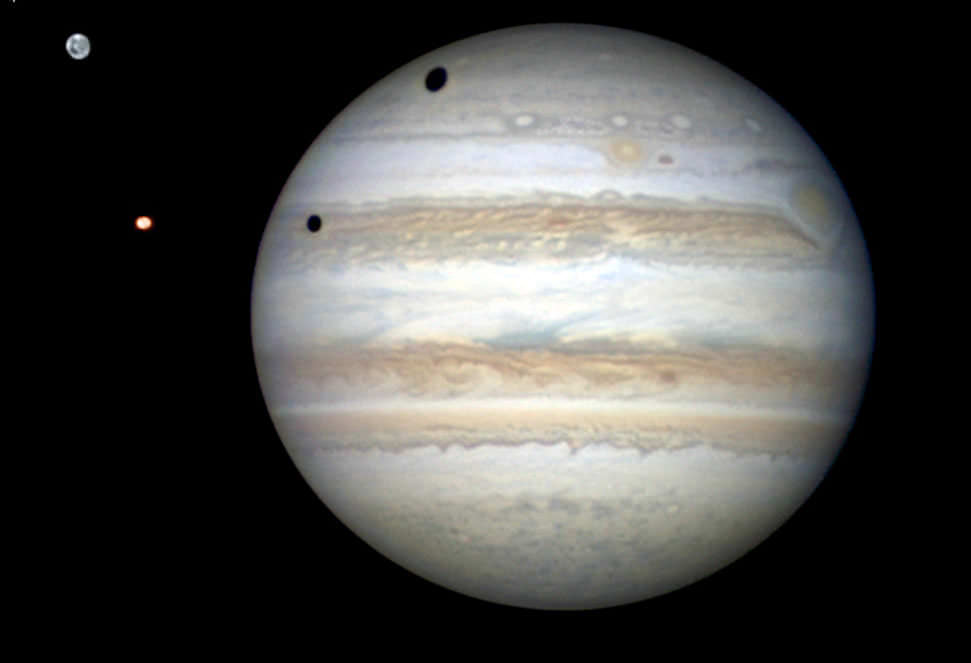
There’s a trick with the “direct collapse” theory, though: astronomers believe it takes a bunch of matter that is one to two times more massive than Jupiter before a collapse can occur to form a planet.
Recall that this world is no more than 28 times the mass of Earth, as best as we can figure. Well, Jupiter itself is 318 times more massive than Earth.
There are also intriguing results about the gap. Chile’s Atacama Large Millimeter/submillimeter Array (ALMA) — which is designed to look at dusty regions around young stars — found that the dust grains in this system, orbiting nearby the gap, are still smaller than the size of a grain of sand.
Astronomers plan to use ALMA and the James Webb Space Telescope, which should launch in 2018, to get a better look. In the meantime, the results will be published in the June 14 edition of the Astrophysical Journal.
Source: HubbleSite


